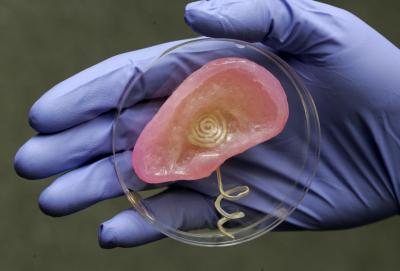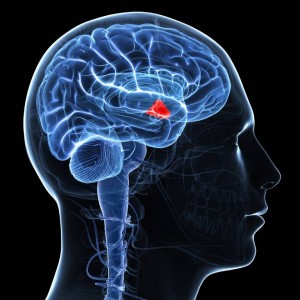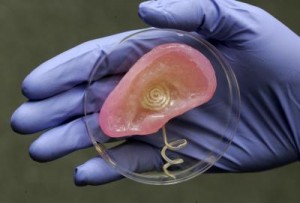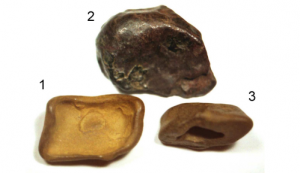This week’s roundup of stories include:
- Mystery remains around honeybee deaths;
- Researchers discover hypothalamus key to slowing aging and cognitive decline;
- New 3D-printed ear combines biology and electronics;
- After 105 years first Tunguska meteorite fragments discovered;
- Geothermal energy comes to the Australian Outback.
Honeybee Colony Collapse Disorder Remains a Mystery
After a comprehensive study on Colony Collapse Disorder (CCD) was released by the U.S. federal government this week we are no further along in understanding why honeybees are dying at abnormal rates. CCD was first identified in the middle of the last decade and has affected honeybees across Europe, North America and Australia. At first it was thought that a fungus or parasitical mite was being spread from hive to hive killing off the insects. Then European authorities cited recently banned pesticides called neonicotinoids.
The American study, however, shows that CCD bees have more than 100 chemicals in their bodies including a range of insecticides and pesticides. Which is the trigger for CCD? Maybe it’s the combination of all these chemical insults. No one knows but if the mystery isn’t solved soon the negative impact on global agricultural yields will become far more significant.
Imagine a world without honeybees! No blueberries, almonds or apples just to name some of the 70 commercial crops that today are pollinated by these insects.
New Discovery May Show Us How to Slow Down Aging in Humans
Of Mice and Men, John Steinbeck’s play, came to mind as I read about the research at Albert Einstein College of Medicine in New York City, and the discovery linking pathways in the hypothalamus in mice to aging. What is good mice seems to work for humans as well. The implications for us are significant and the research is published in the latest online edition of Nature.
The hypothalamus, deep inside the brain, controls growth, development, reproduction and metabolism. The leading researcher at Albert Einstein, Dr. Dongsheng Cai, also believes that the hypothalamus controls aging and so he has tried to identify proteins that could play a role. And he has been successful, identifying the protein complex called NF-kB, short for nuclear factor kappa-light-chain-enhancer of activated B cells, as playing a large role in many aspects of aging from physiological to cognitive processes.
Now the team is learning how to manipulate the protein pathways to develop therapies that can slow age-related diseases and extend lifespan.
Bionic Ear 3D Printed at Princeton
Scientists at Princeton University in New Jersey have created a functional ear using a 3D printer. It’s not just cosmetic. This ear can hear and not just the normal sounds you and I can detect, but those far beyond human capacity just like Steve Austin, the 6-million-dollar man.
The field of additive manufacturing is proving to be very promising for medicine. A 3D printer can use multiple materials to build something as complexly shaped as a human ear. In the case of the bionic ear, the researchers combined a matrix of hydrogel, calf cells and silver nanoparticles (for the antenna) as the materials for the 3D printer to use following a computer-aided-design detailed drawing.
The finished ear contains a coiled antenna within a cartilage structure, the latter derived from the calf cells. Enhancements are planned in the near future to improve auditory capabilities.
Tunguska Meteor Fragments Discovered 108 Years Later
If you are not familiar with the Tunguska Event, it occurred on June 30, 1908 over a Siberian forest area. A meteor or comet slammed into the Earth’s atmosphere and exploded with a force 1,000 times greater than the atomic bomb that leveled Hiroshima. The blast flattened 80 million trees and devastated an area over 2,000 square kilometers (772 square miles). That’s an area three times larger than the City of Toronto (630 square kilometers).
Unlike the meteorite that exploded over Chelyanbinsk, Russia a couple of months ago, the Tunguska event happened over an isolated part of the country with few human eye witnesses. An expedition in the 1930s found evidence of a meteorite but the samples were lost.
But a new announcement from the Russian Academy of Sciences in the last week states that three rocks have been discovered from the Tunguska region that appear to be fragments of the rock that exploded in 1908. The stones were found in a local river back in 1988 but had not been catalogued and analyzed until recently. The discovery is described in a paper which you can access here.
Geothermal Plant About to Go Live in Australia
Of all the renewables — hydroelecticity, solar, wind, tide, wave, and geothermal, it is the latter that you hear least about. That’s why this story caught my eye. I don’t associate Australia as a hot geothermal energy zone. New Zealand, absolutely. Iceland, for sure. But Australia?
The Habanero pilot geothermal project, located near Innamincka, South Australia, is the first of its type. Built by Geodynamics, the plant is rated to produce 1 Megawatt of power continuously.
The system combines 3 closed-loop systems linked by heat exchangers. The first closed system contains hot geothermal brine that comes from the production well drilled deep into the earth. The heated brine interacts with the second closed loop containing freshwater, converting the water to high pressure steam. That steam is used to drive turbines linked to generators. The spent steam then gets condensed by a third closed system that contains cold water. The Habanero plant is undergoing a 100-day field test before it goes online permanently.
A Postscript
With a little over two weeks to go before my family and I pick up stakes and move I continue to try and get a daily posting out to you. So far, so good. And I thank you, my readers, who in increasing numbers are dropping in to not only read the new postings here but also are visiting my Facebook and LinkedIn pages as well.
I have been writing this blog for more than four years and it is good to see so many of you accessing archival postings. If you have not done this before you can find topics of interest three ways. Use the menus displayed at the top of the web page. Or click on categories in the topic pick list which you find on the right-hand side of the page. Or just type a word or combination of words in search, the magnifying glass that appears next to the menu bar.
Once again, thanks for dropping by. Your many questions and comments are much appreciated.
– Len Rosen






















[…] in 2013, I wrote about Colony Collapse Disorder (CCD), which described the massive die-off of honeybees worldwide, a phenomenon first observed in 2006. […]